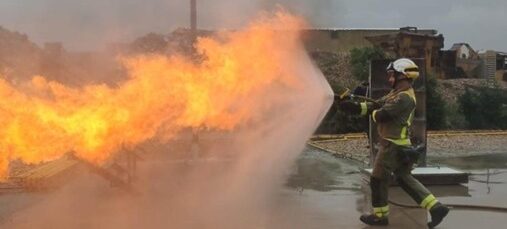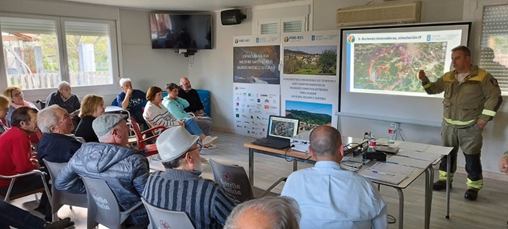Nurturing local resilience against wildfires with the “Safe Model Village” initiative
Galicia faces a critical challenge: extreme wildfire events are getting more frequent and stronger, especially in wildland-urban interface areas where abandoned agricultural fields are not uncommon. The Safe Model Villages initiative, tested in Trelle, aims to guarantee the safety and protection of villages and their inhabitants. By combining the training of local communities with the development of innovative technologies and livestock activities, it improves landscape management and community resilience in response to the growing wildfire risk.
Protecting low-populated rural communities from increasing fire risks
In Galicia, the increasing intensity of extreme wildfires requires a more comprehensive and proactive response. This initiative arose from the urgent need to protect rural areas and communities living in the rural-wildland interface.
The territory is particularly fragile due to depopulation and ageing trends in small, dispersed villages. The abandonment of agricultural fields further exacerbates the risk of fires, and local communities often lack the knowledge and resources to respond effectively when fires occur, with serious impacts on both nature and rural life.
Since the initiative targets rural areas, it is especially relevant to mountain regions, which often share similar challenges: marginality, depopulation, and high vulnerability to forest fires. The practice is highly applicable in such contexts.
Building a safe model village with local communities
To tackle the low preparedness to wildfires, the activities carried out in Trelle, in the municipality of Toén, in Galicia (Spain) have foreseen initial interviews to assess residents’ knowledge of the environment and fire risks. Consequently, the municipality organised community gatherings to raise awareness about forest fires and emergency procedures, shared safety recommendations, and posted informational signs indicating safe locations to go in case of emergency. In addition to the more theoretical aspects, training was also provided, including practical drills and simulations with virtual reality technologies. A comprehensive preparation of the territory was carried out to minimise the risk and impact of fires, combining forestry interventions and fuel treatment with clearing the roads, forest tracks, and firebreaks, and rehabilitating abandoned agricultural land for a renewed, sustainable use.
Within the project, innovative tools have also been tested, such as a double-effect fire extinguishing lance, which offers vital protection to those who intervene on the frontline of an extreme forest fire.
The inhabitants of the village and farmers were the direct beneficiaries. The project involved local authorities, emergency services such as fire brigades, civil protection, policy makers, scientists, and researchers.
Enhanced resilience to fire risks
The model helped to strengthen the security of the villages and their inhabitants, providing civilians in wildland-urban interface areas with the appropriate knowledge to protect themselves when a fire occurs. It also rehabilitated abandoned agricultural land for sustainable use, fostering rural economies.
The implemented activities directly addressed the initial challenge of fire vulnerability by improving community preparedness and awareness, enabling people to take preventive measures.
In the long term, the implementation of this model is expected in other villages too. Additionally, the initiative supports the development of formal regulations to institutionalise this approach and promote its wider adoption.

